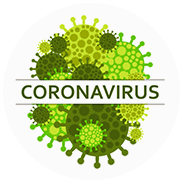
If you are unwell, stay at home. If you have any symptoms suggestive of COVID-19, wear a mask when interacting with others in or outside of your household or sharing space with others. If you have shortness of breath or pain or pressure in the chest, seek medical attention at a health facility immediately. Call your health care provider or hotline in advance for direction to the right health facility. Get tested for COVID-19, regardless of your vaccination status, and especially if you are at high-risk for severe illness and could therefore be eligible for drug treatments. Practice protective and preventive measures. Wear a mask, avoid crowded and poorly ventilated areas, improve ventilation in indoor spaces, keep a distance, practice hand hygiene, and respiratory etiquette (covering your mouth and nose with a bent elbow or a tissue when you cough or sneeze), get vaccinated and stay up to date with booster doses.
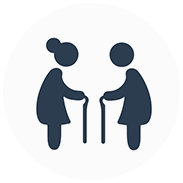
Antibiotics do not work against viruses; they only work on bacterial infections. COVID-19 is caused by a virus, so antibiotics do not work. Antibiotics should not be used as a means of prevention or treatment of COVID-19. In hospitals, physicians will sometimes use antibiotics to treat secondary bacterial infections, which can be a complication of COVID-19 in severely ill patients. They should only be used as directed by a physician to treat a bacterial infection.
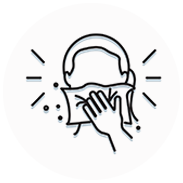
The time from exposure to COVID-19 to the moment when symptoms begin is, on average, 5–6 days and can range from 1–14 days. This is why people who have been exposed to the virus are advised to remain at home and stay away from others in order to prevent the spread of the virus.
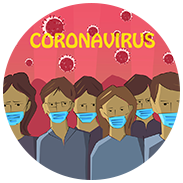
Before touching the mask, clean hands with an alcohol-based hand rub or soap and water Take the mask and inspect it for tears or holes. Orient which side is the top side (where the metal strip is). Ensure the proper side of the mask faces outwards (the coloured side). Place the mask to your face. Pinch the metal strip or stiff edge of the mask so it moulds to the shape of your nose. Pull down the mask’s bottom so it covers your mouth and your chin. After use, take off the mask; remove the elastic loops from behind the ears while keeping the mask away from your face and clothes, to avoid touching potentially contaminated surfaces of the mask. Discard the mask in a closed bin immediately after use. Perform hand hygiene after touching or discarding the mask – Use alcohol-based hand rub or, if visibly soiled, wash your hands with soap and water.

Longevity of the immune response in vaccinated individuals is yet to be determined. Hence, continuing the use of masks, handwashing, physical distancing and other COVID-19 appropriate behaviours is strongly recommended.
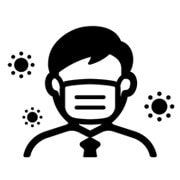
Both the vaccines are safe but in case of any discomfort or complaint, ask the beneficiary to visit the nearest health facility and/or call the health worker whose phone number is given in the Co-WIN SMS received after vaccination.
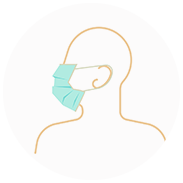
When an increasing number of people get vaccinated in the community, indirect protection through herd immunity develops. The percentage of people who need to be immune in order to achieve herd immunity varies with each disease. For example, its 95% for measles, however the proportion of the population that must be vaccinated against COVID-19 to begin inducing herd immunity is not known.
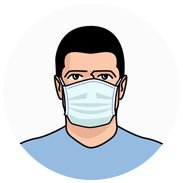
The main way the disease spreads is through respiratory droplets expelled by someone who is coughing. The risk of catching COVID-19 from someone with no symptoms at all is very low. However, many people with COVID-19 experience only mild symptoms. This is particularly true at the early stages of the disease. It is therefore possible to catch COVID-19 from someone who has, for example, just a mild cough and does not feel ill. WHO is assessing ongoing research on the period of transmission of COVID-19 and will continue to share updated findings.
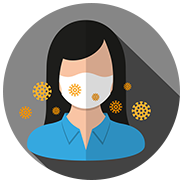
Both isolation and quarantine are methods of preventing the spread of COVID-19.Quarantine is used for certain persons who are a contact of someone infected with SARS-CoV-2, the virus that causes COVID-19, whether the infected person has symptoms or not. Quarantine means that you remain separated from others because you have been exposed to the virus and you may be infected and can take place in a designated facility or at home. For COVID-19, this means staying in the facility or at home for several days.Isolation is used for people with COVID-19 symptoms or who have tested positive for the virus. Being in isolation means being separated from other people, ideally in a medical facility where you can receive clinical care. If isolation in a medical facility is not possible and you are not in a high-risk group for developing severe disease, isolation can take place at home. If you have symptoms, you should remain in isolation for at least 10 days. If you are infected and do not develop symptoms, you should remain in isolation for 5 days from the time you test positive. You can be discharged from isolation early if you test negative on a rapid antigen test.

Antibody tests can tell us whether someone has had an infection in the past, even if they have not had symptoms. Also known as serological tests, these tests detect antibodies produced in response to an infection or vaccination. In most people, antibodies start to develop after days to weeks and can indicate if a person has had past infection or has been vaccinated. Antibody tests cannot be used to diagnose SARS-CoV-2 infection in the early stages of infection or disease but can indicate whether or not someone has had the disease in the past. If you have been vaccinated, many antibody tests are not able to distinguish between whether you were previously infected or have been vaccinated (or both), so in such situations you will test positive in either case.
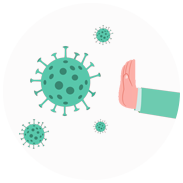
Some people who have had COVID-19, whether they have needed hospitalization or not, continue to experience symptoms, including fatigue, respiratory and neurological symptoms. These long-term effects are called post COVID-19 condition (also called long COVID). For further information on long COVID, see post COVID-19 condition and questions and answers.
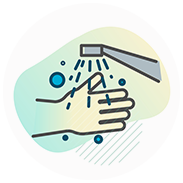
People aged 60 years and over, and those with underlying medical problems like high blood pressure, diabetes, other chronic health problems (for example those affecting the heart, lungs, kidneys, and brain), low immune function / immunosuppression (including HIV), obesity, cancer, and unvaccinated people are most at risk of severe illness. However, anyone at any age can get sick with COVID-19 and become seriously ill or die.

Stay aware of the latest information on the COVID-19 outbreak, available on the WHO website and through your national and local public health authority. Most countries around the world have seen cases of COVID-19 and many are experiencing outbreaks. Authorities in China and some other countries have succeeded in slowing their outbreaks. However, the situation is unpredictable so check regularly for the latest news. You can reduce your chances of being infected or spreading COVID-19 by taking some simple precautions: * Regularly and thoroughly clean your hands with an alcohol-based hand rub or wash them with soap and water. Why? Washing your hands with soap and water or using alcohol-based hand rub kills viruses that may be on your hands. * Maintain at least 1 metre distance between yourself and others. Why? When someone coughs, sneezes, or speaks they spray small liquid droplets from their nose or mouth which may contain virus. If you are too close, you can breathe in the droplets, including the COVID-19 virus if the person has the disease. * Avoid going to crowded places. Why? Where people come together in crowds, you are more likely to come into close contact with someone that has COVID-19 and it is more difficult to maintain physical distance of 1 metre. * Avoid touching eyes, nose and mouth. Why? Hands touch many surfaces and can pick up viruses. Once contaminated, hands can transfer the virus to your eyes, nose or mouth. From there, the virus can enter your body and infect you. * Make sure you, and the people around you, follow good respiratory hygiene. This means covering your mouth and nose with your bent elbow or tissue when you cough or sneeze. Then dispose of the used tissue immediately and wash your hands. Why? Droplets spread virus. By following good respiratory hygiene, you protect the people around you from viruses such as cold, flu and COVID-19. * Stay home and self-isolate even with minor symptoms such as cough, headache, mild fever, until you recover. Have someone bring you supplies. If you need to leave your house, wear a mask to avoid infecting others. Why? Avoiding contact with others will protect them from possible COVID-19 and other viruses. * If you have a fever, cough and difficulty breathing, seek medical attention, but call by telephone in advance if possible and follow the directions of your local health authority. Why? National and local authorities will have the most up to date information on the situation in your area. Calling in advance will allow your health care provider to quickly direct you to the right health facility. This will also protect you and help prevent spread of viruses and other infections. * Keep up to date on the latest information from trusted sources, such as WHO or your local and national health authorities. Why? Local and national authorities are best placed to advise on what people in your area should be doing to protect themselves.

If you choose to wear a mask: 1. Before touching the mask, clean hands with an alcohol-based hand rub or soap and water 2. Take the mask and inspect it for tears or holes 3. Orient which side is the top side (where the metal strip is) 4. Ensure the proper side of the mask faces outwards (the coloured side) 5. Place the mask to your face. Pinch the metal strip or stiff edge of the mask so it moulds to the shape of your nose 6. Pull down the mask’s bottom so it covers your mouth and your chin 7. Do not touch the mask while you are wearing it for protection 8. After use, take off the mask with clean hands; remove the elastic loops from behind the ears while keeping the mask away from your face and clothes, to avoid touching potentially contaminated surfaces of the mask 9. Discard the mask in a closed bin immediately after use. Do not reuse the mask 10. Perform hand hygiene after touching or discarding the mask – Use alcohol-based hand rub or, if visibly soiled, wash your hands with soap and water Be aware that there is a global shortage of medical masks (both surgical masks and N95 masks). These should be reserved as much as possible for health care workers. Remember that masks are not a substitute for other, more effective ways to protect yourself and others against COVID-19 such as frequently washing your hands, covering your cough with the bend of elbow or tissue and maintain a distance of at least 1 meter from others. See basic protective measures against the new coronavirus for more information. Follow the advice of your national health authority on the use of masks.
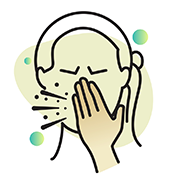
The time between exposure to COVID-19 and the moment when symptoms start is commonly around five to six days but can range from 1 – 14 days.
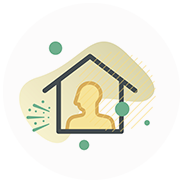
COVID-19 is spread through human-to-human transmission. We already know a lot about other viruses in the coronavirus family and most of these types of viruses have an origin in animals. The COVID-19 virus (also called SARS-CoV-2) is a new virus in humans. The possible animal source of COVID-19 has not yet been confirmed but research is ongoing. WHO continues to monitor the latest research on this and other COVID-19 topics and will update, as new findings are available
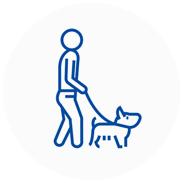
Several dogs and cats (domestic cats and tigers) in contact with infected humans have tested positive for COVID-19. In addition, ferrets appear to be susceptible to the infection. In experimental conditions, both cats and ferrets were able to transmit infection to other animals of the same species. However, there is no evidence that these animals can transmit the disease to humans and spread COVID-19. COVID-19 is mainly spread through droplets produced when an infected person coughs, sneezes, or speaks. Minks raised in farms have also been detected with the virus. Most likely, they have been infected by farm workers. In a few instances, the minks that were infected by humans have transmitted the virus to other people. These are the first reported cases of animal-to-human transmission. It is still recommended that people who are sick with COVID-19 and people who are at risk limit contact with companion and other animals. When handling and caring for animals, basic hygiene measures should always be implemented. This includes hand washing after handling animals, their food or supplies, as well as avoiding kissing, licking or sharing food.
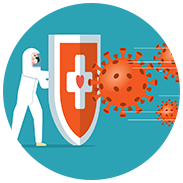
The most important thing to know about coronavirus on surfaces is that they can easily be cleaned with common household disinfectants that will kill the virus. Studies have shown that the COVID-19 virus can survive for up to 72 hours on plastic and stainless steel, less than 4 hours on copper and less than 24 hours on cardboard. As, always clean your hands with an alcohol-based hand rub or wash them with soap and water. Avoid touching your eyes, mouth, or nose.
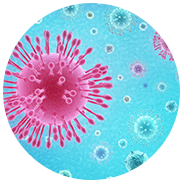
While initial investigations suggest the virus may be present in faeces in some cases, to date, there have not been reports of faecal-oral transmission of COVID-19. Additionally, there is no evidence to date on the survival of the COVID-19 virus in water or sewage. WHO is assessing ongoing research on the ways COVID-19 is spread and will continue to share new findings on this topic.

